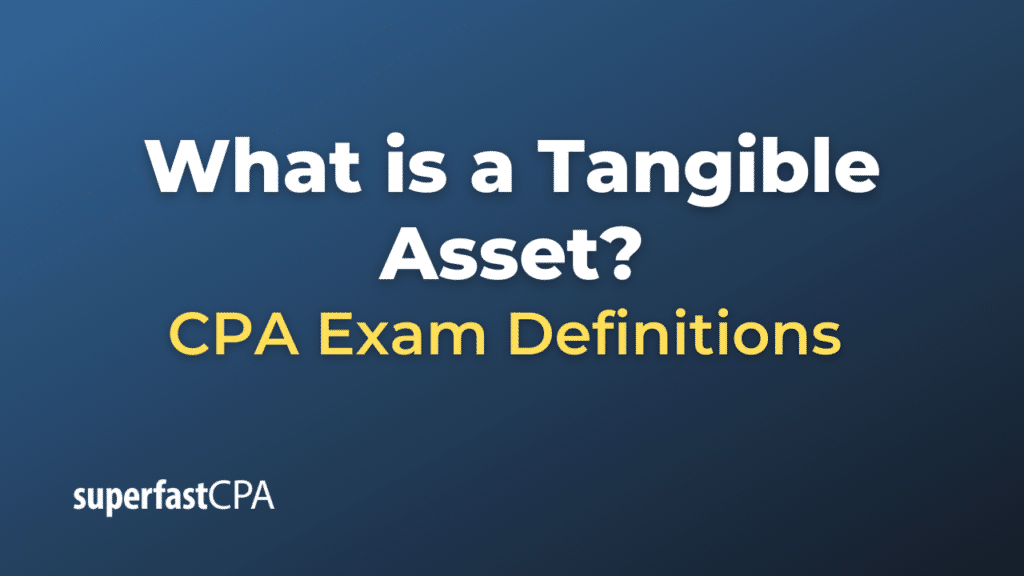Tangible Asset
A tangible asset is a physical asset that has a finite monetary value and can be seen and touched. These assets are used in the operations of a business and have a physical presence. They are distinguishable from intangible assets, which lack a physical presence, such as copyrights, patents, trademarks, and goodwill.
Common examples of tangible assets include:
- Land: Plots of ground owned by a business or individual.
- Buildings: Structures like offices, warehouses, and factories.
- Machinery and Equipment: Manufacturing machines, computers, printers, and other operational tools.
- Vehicles: Cars, trucks, boats, airplanes, etc., owned by the business.
- Inventory: Goods available for sale or raw materials waiting to be used or processed.
- Furniture and Fixtures: Desks, chairs, light fixtures, etc.
- Cash and Cash Equivalents: Physical money, bank notes, coins, etc.
Characteristics of tangible assets:
- Depreciation: Most tangible assets, with the exception of land, decrease in value over time due to wear and tear. This decrease in value is accounted for through depreciation, which spreads the cost of the asset over its useful life.
- Liquidity : Tangible assets can vary in liquidity. For instance, cash is highly liquid, while real estate and machinery can take longer to convert into cash.
- Physical Existence: As emphasized, tangible assets have a physical presence, which means they can be seen and touched.
- Collateral Value: Due to their physical nature, tangible assets are often used as collateral for loans.
- Valuation: The value of tangible assets is often clearer and more straightforward than intangible assets, especially for items like cash, vehicles, or equipment.
On a balance sheet, tangible assets typically appear under the section titled “Property, Plant, and Equipment” (often abbreviated as PP&E). Proper management and assessment of tangible assets are vital for businesses, as these assets often make up a significant portion of a company’s total value and play a crucial role in its operations.
Example of a Tangible Asset
Let’s take a look at a fictional small business and its tangible assets to better understand the concept:
Business: Joe’s Coffee Shop
Tangible Assets:
- Land: Joe’s Coffee Shop is located on a plot of land that Joe bought when he started his business. The plot of land is valued at $150,000.
- Building: The building, where the coffee shop operates, was constructed on the land. The building’s initial value was $200,000.
- Machinery and Equipment:
- Espresso machine: $10,000
- Coffee grinder: $1,000
- Commercial refrigerator: $3,500
- Point-of-sale system: $2,500
- Furniture and Fixtures:
- Chairs and tables: $5,000
- Counters and shelving: $4,000
- Decorative light fixtures: $1,000
- Inventory:
- Coffee beans: $2,000
- Pastries and other food items: $1,000
- Branded mugs for sale: $500
- Cash and Cash Equivalents:
- Cash in the register: $500
- Cash in the safe: $1,500
Summary: If you were to evaluate the total value of tangible assets Joe’s Coffee Shop possesses:
- Land: $150,000
- Building: $200,000
- Machinery and Equipment: $17,000
- Furniture and Fixtures: $10,000
- Inventory: $3,500
- Cash and Equivalents: $2,000
Total Tangible Assets: $382,500
This total gives Joe, as well as any stakeholders or potential investors, an understanding of the physical resources and their value underpinning Joe’s Coffee Shop. Over time, many of these assets (like the espresso machine, furniture, and building) will depreciate in value, and this depreciation will be reflected in the company’s financial statements.













